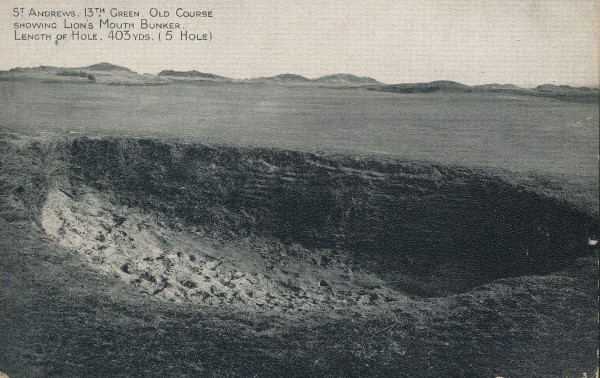"Why do we have bunkers at all?"
/
Not fill them in mind you, he says, but "remove the definition and every other mention of them from the rules. They (physically) can remain and we will just play them as through the green."
Naturally, I'm for this and anything else that makes the rules of golf a little less ridiculous.
So what would change? David lays out the case:
1. You could ground your club in the area formerly known as a bunker. Even practice swings. Lots of em. And no, Bobby Jones would not rise out of his grave and tell us we were all cheating. Yes, you would be able to test the surface and change your shot selection accordingly, just as we do in the rough and the fairway. No one complains if you take 10 practice swings in the fairway to test the firmness or lack thereof of the turf.
But wouldn't this leaded to a widespread "testing the surface" debate?
You would not be able to smash your club down behind the ball to improve the lie, because that would be improving your lie, just as it would be in the rough or fairway. In long rough, good players don't press their club down into the grass because they are afraid of either the ball moving, or being accused of trying to improve the lie.
Well, except Kenny Perry. Sorry, go on.
The same would hold in the sand. If the sand was hard packed you could set your club down without fear, but in soft sand would be more careful, just like in the fairway or rough. Judgment and skill would continue to be important.
2. No more "digging in" in the sand to build a stance. And don't give me the "moving your feet back and forth is not building a stance" line. If you can't do it in the fairway, you can't do it in the sand.
3. No more rules officials standing around trying to figure out what is or is not a bunker, or spillover, or attempting to define the margin of the hazard. Guys playing in their regular Saturday game would be able to apply the rule as effectively as if they had their own personal rules official.
They used to call this: PLAY IT AS IT LIES!
4. The embedded ball rule could remain the same. As long as you only allow a drop for balls embedded in the "closely mown area" nothing would change in regard to balls plugged in sand.
5. Casual water situations in the sand would be easier to deal with. Just take the closest relief, regardless if in the sand or not. Sometimes dropping out of the sand would be an advantage, other times it would not.
6. The architectural significance or the strategic implementation of sand would not be diminished, as players would still prefer to be in the fairway. And by the way, rake it or don't rake it, I don't care. Maybe some clubs would choose to rake their sand and others would not.
The question is, would courses ramp up their bunker maintenance even more if bunkers are played through the green, or would the opposite effect occur? Is much of the capital poured into bunkers done so because golfers can't ground their clubs and therefore expect perfection to compensate for the inability to place their club down?
Either way, David concludes...
It makes the rules easier to understand, easier to follow and enforce, and easier to explain to new golfers. It does not reduce the importance of skill, in fact, it makes skill more important. You know how I know that it could be accepted? I have never heard anyone say that the 91 Ryder Cup at Kiawah was not a legitimate tournament or the outcome was adversely affected by players grounding their clubs. No one even remembers that element of the tournament. If I remember correctly, it was Larry Startzel that was the head rules official that week. I wonder what he would say about this?
We must track Larry down!
Okay, why do we need "bunkers" at all?











